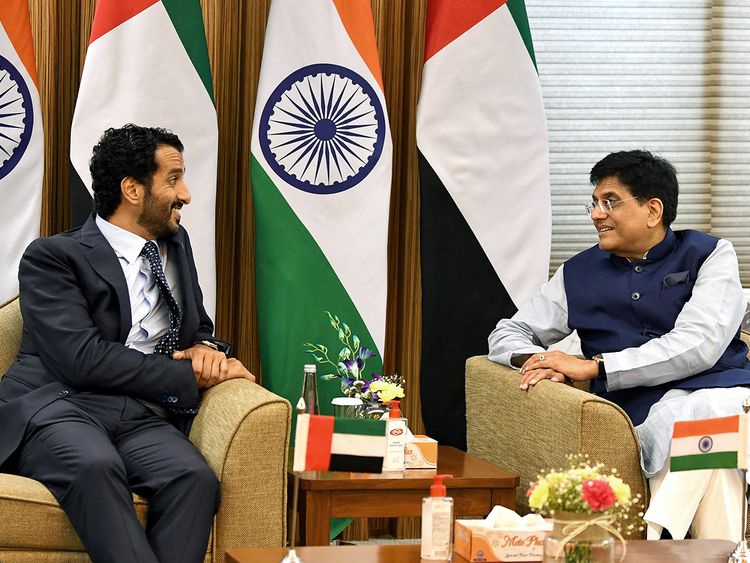
Signed on February 18, 2022, the agreement came into force on May 1 with the arrival of the first imports exempted from tariffs.
Since the launch of the CEPA program as part of the ‘Projects of the 50’ initiative, the UAE began talks to sign CEPAs with several countries of strategic importance both regionally and internationally, aiming to sign eight agreements in 2022, he added.
In an interview with WAM, the minister said the UAE chose India to sign the first CEPA to underscore the strategic ties between the two countries.
The CEPA between the UAE and India will intensify bilateral trade and add 1.7 percent, or $9 billion, to the UAE’s GDP by 2030, increasing the UAE’s exports by 1.5 per cent and its imports by 3.8 per cent by 2030. It will also create some 140,000 jobs for talented people and those with specialist skills in the most promising sectors of the UAE economy by 2030.
The minister stressed that the CEPA offers many advantages, including reducing and canceling tariffs, widening access to markets, and creating opportunities in vital areas, such as aviation, environment, hospitality, logistics, investment, construction, financial services, and digital trade.
The agreement will offer numerous advantages for small and medium-sized enterprises (SMEs) in the private sectors of both countries, the minister added.
The CEPA covers 11 service sectors and more than 100 sub-sectors, including business services, professional services, accounting, real estate, advertising, communications, building and construction, related services, educational services, environmental services, financial services, insurance, social and health services, and travel and tourism service, he added.
Al Marri stressed that India is the UAE’s largest trading partner in terms of non-oil exports, equivalent to 14 percent of its total global exports, while the UAE is also India’s third-largest trading partner and accounts for 40 percent of its trade with Arab countries.
“This historic agreement aims to increase our non-oil bilateral trade to $100 billion annually over the next five years. India is also one of the UAE’s largest investment partners, whether in terms of investments issued or received by the country,” he added.
The most prominent commodities exported from the UAE to India and the commodities imported from India are gold, diamonds and jewelry, machinery, electrical appliances, petroleum and plastics, and minerals that include iron, steel, and aluminum.
The two countries account for more than 16 per cent of the global trade in diamonds, gold, and jewelry.
Figures show that three percent of the UAE’s trade during the COVID-19 pandemic was with India, which is among the 15 most important exporters of food commodities in the world.
India is ranked second in terms of the UAE’s total trade in food commodities and products, and is one of the most important suppliers in the UAE’s food commodities market, contributing 10 percent of the UAE’s total imports of food commodities and products.
Source: UAE to begin reducing tariffs on India’s goods by 90%: Minister of Economy | Business – Gulf News
